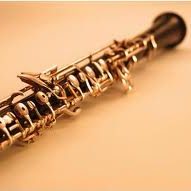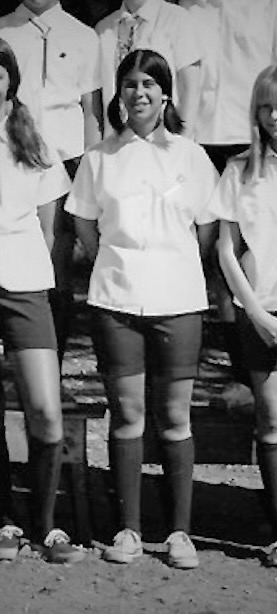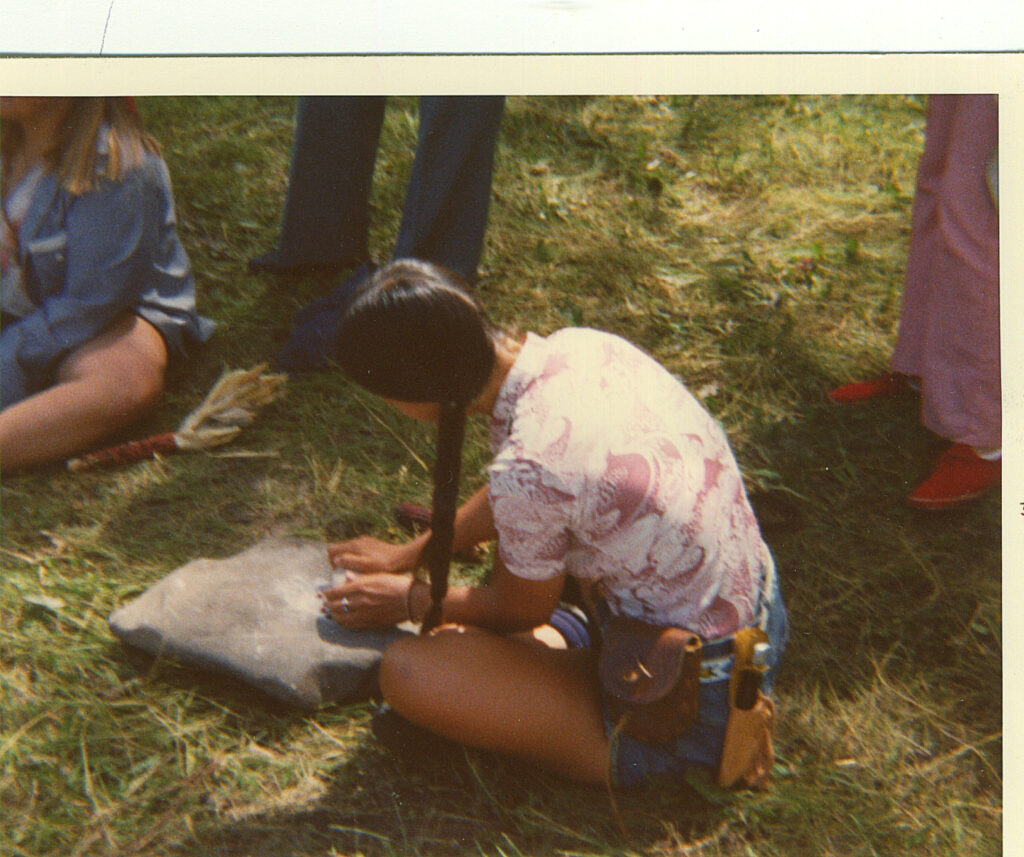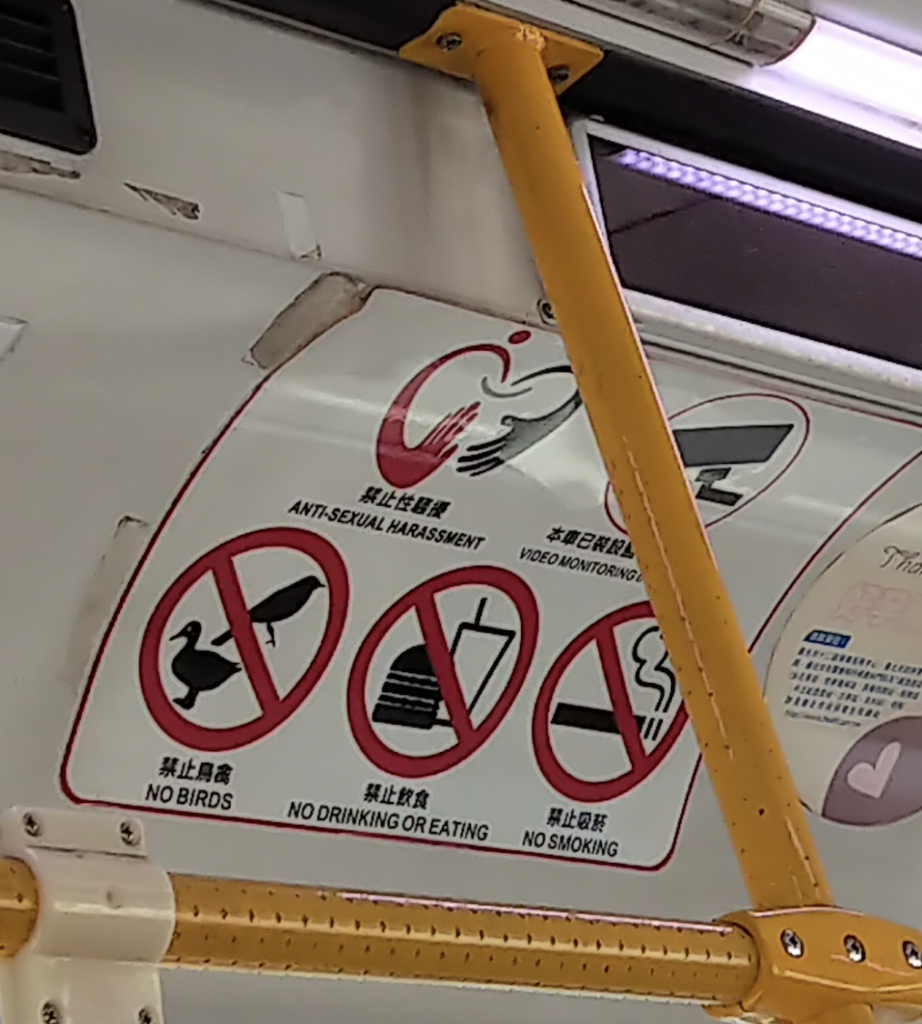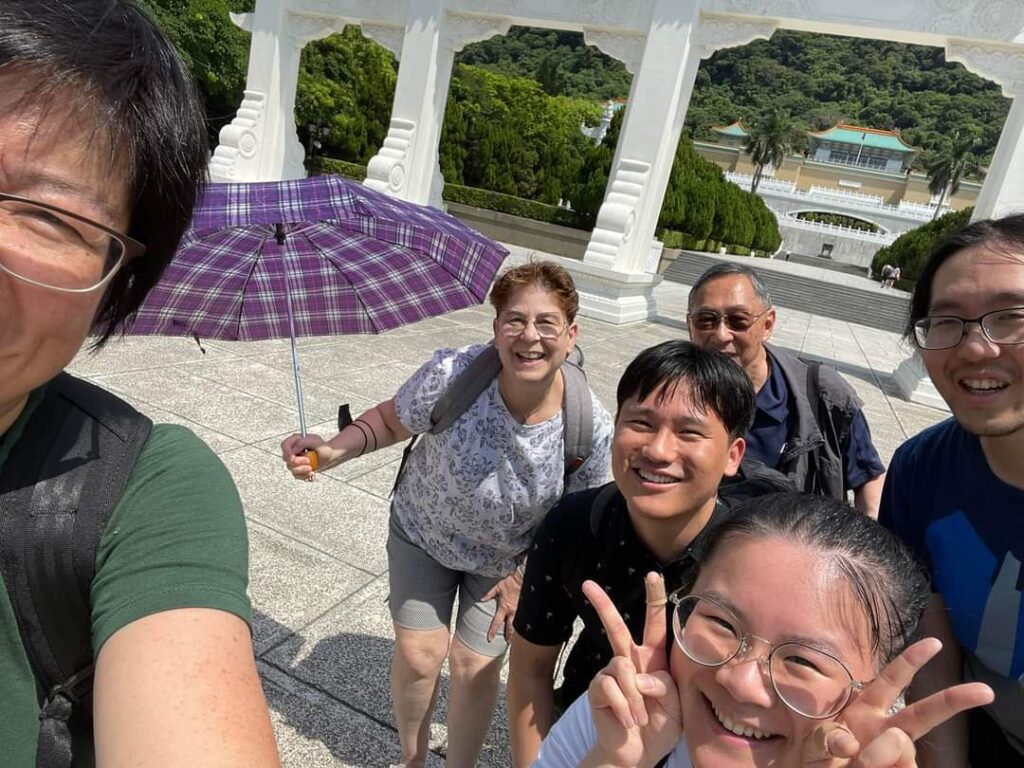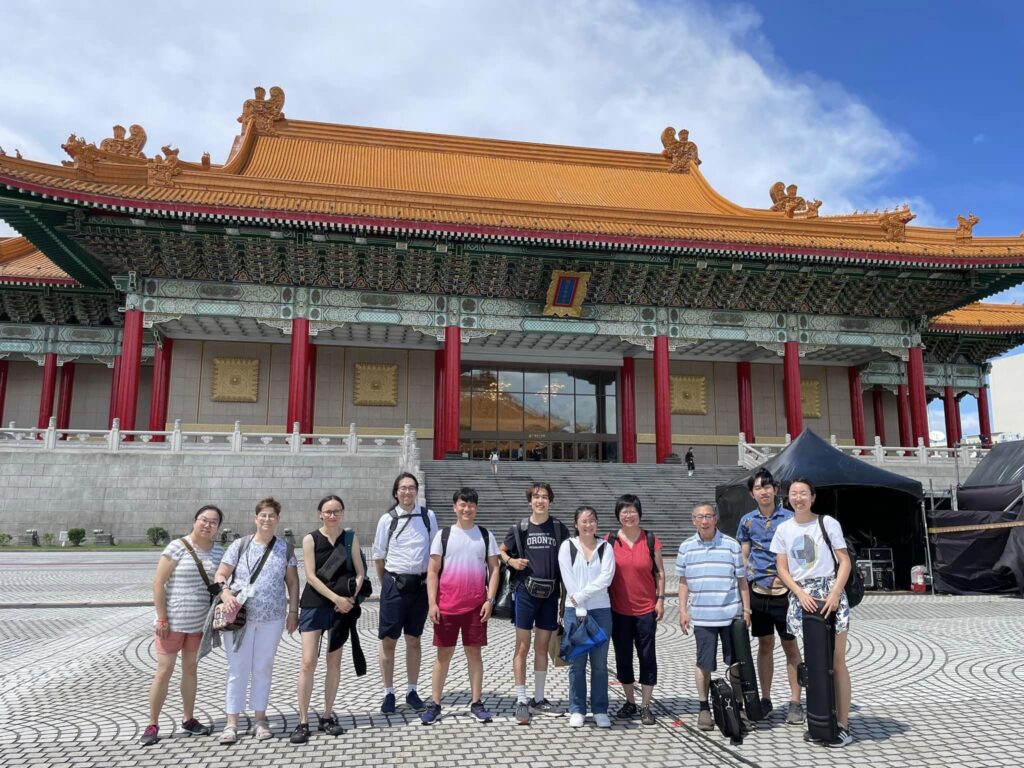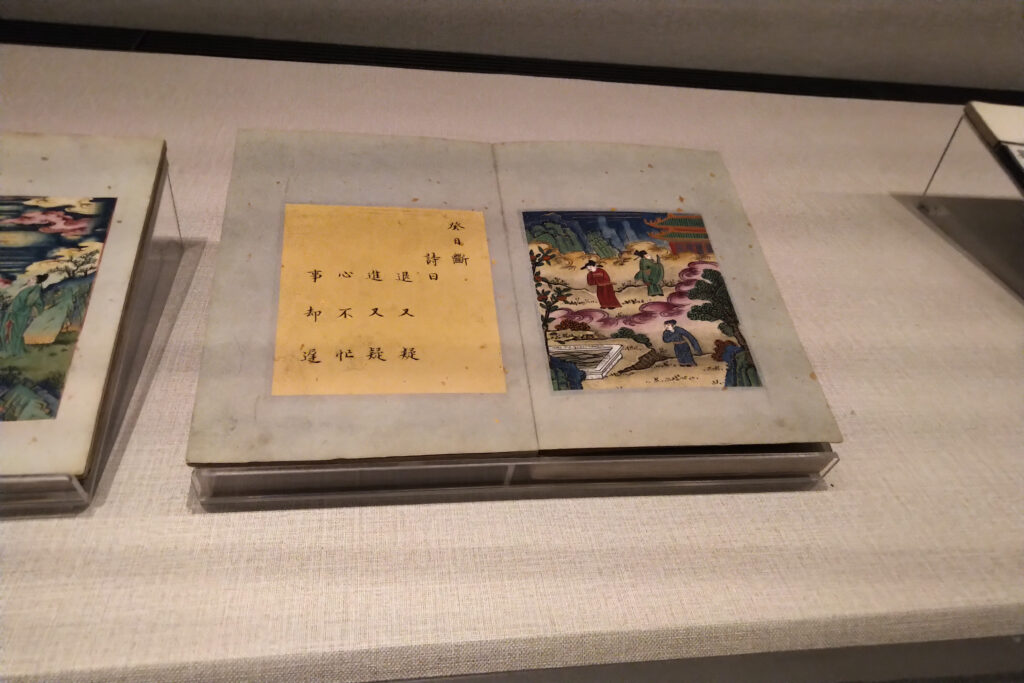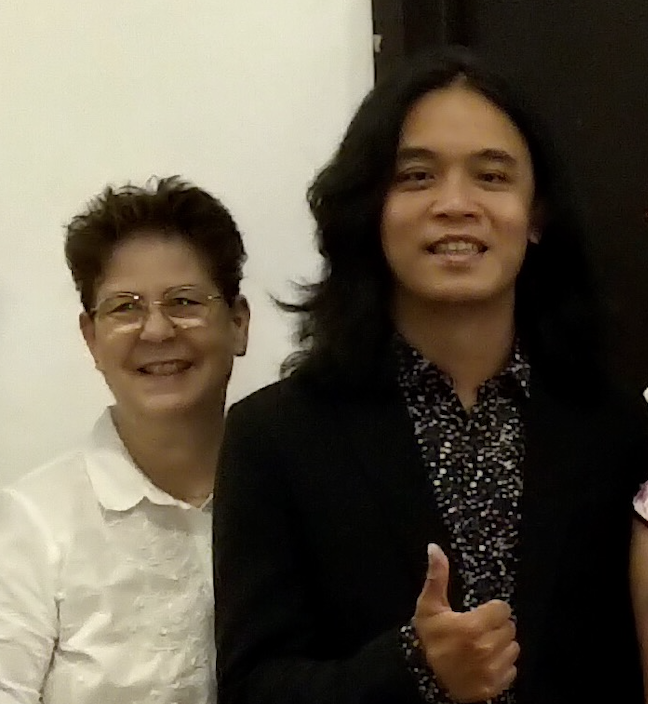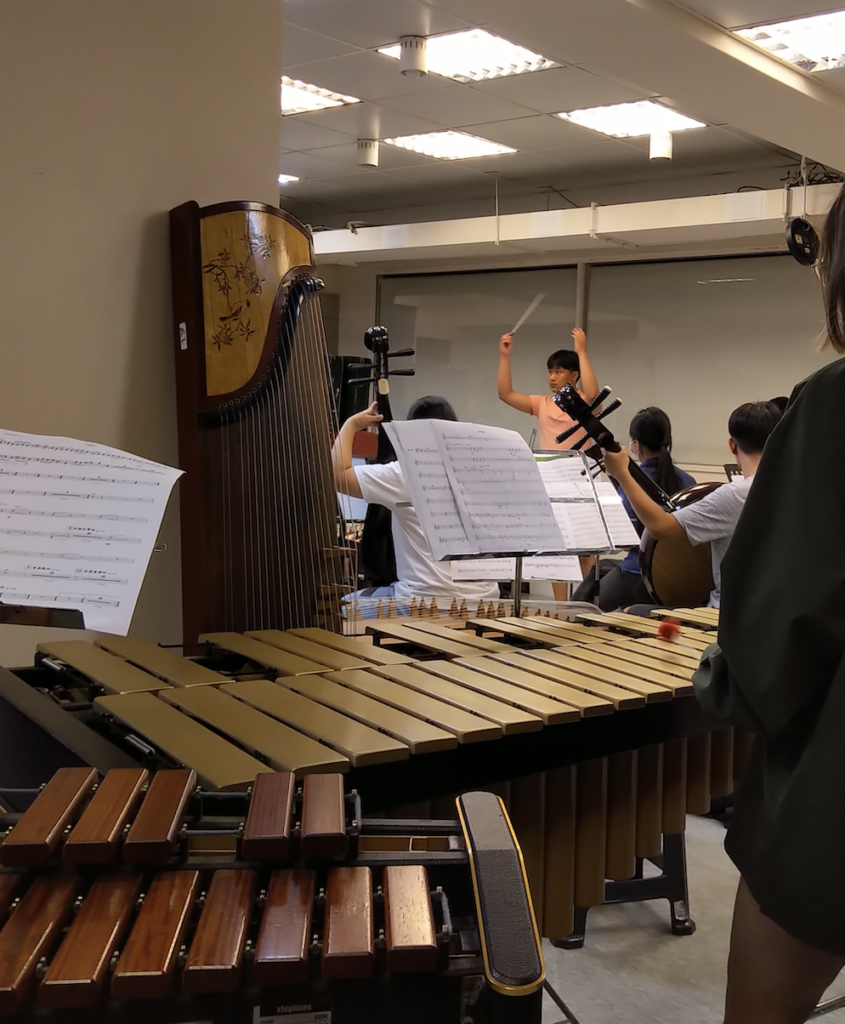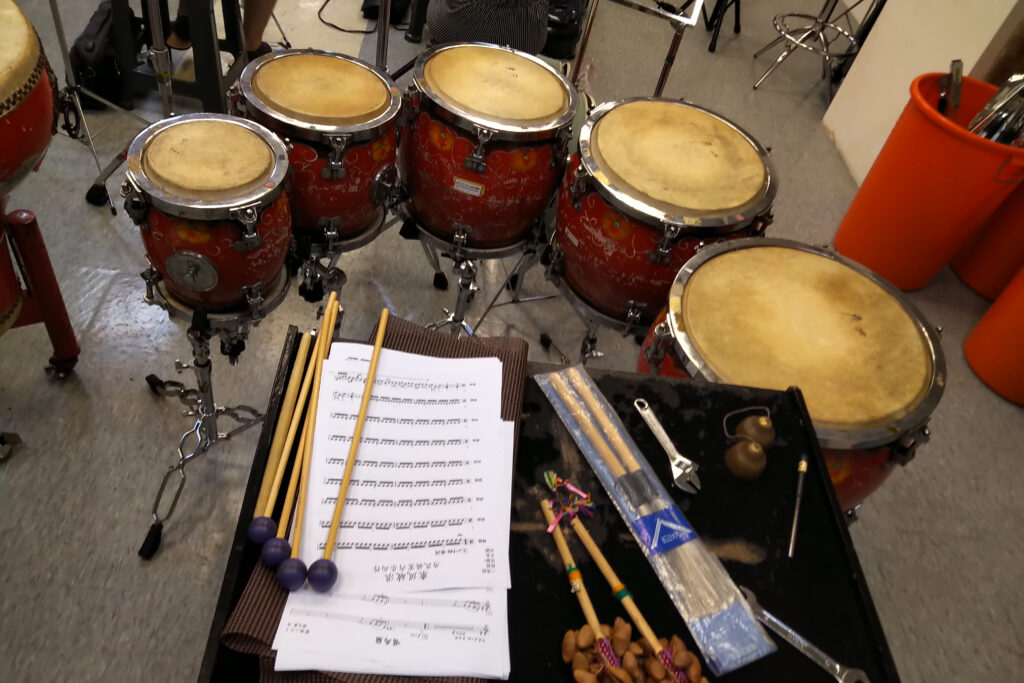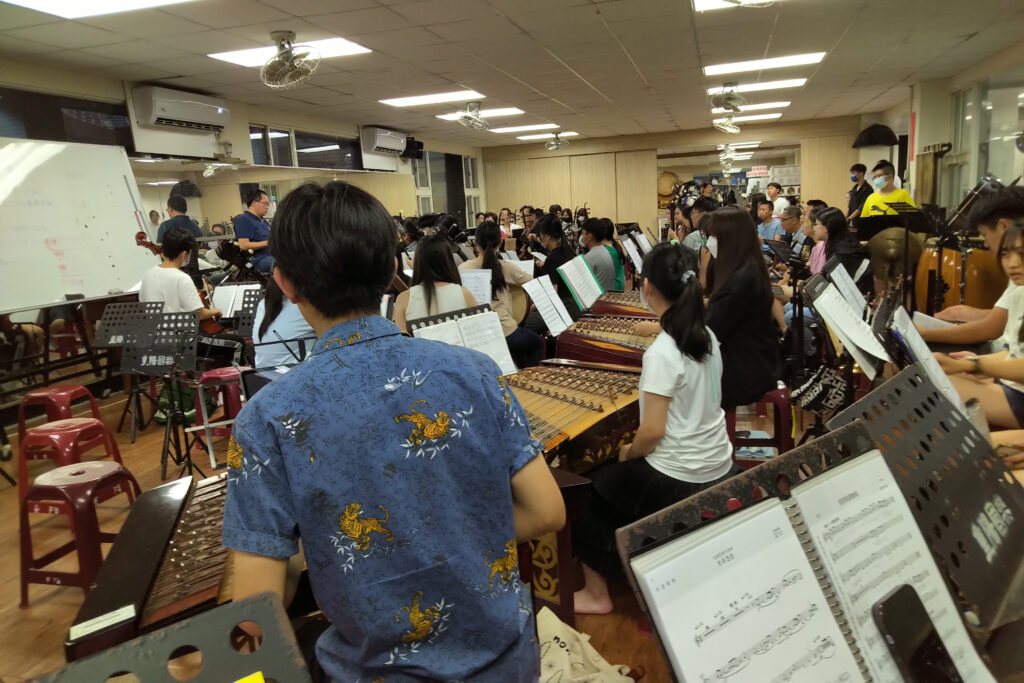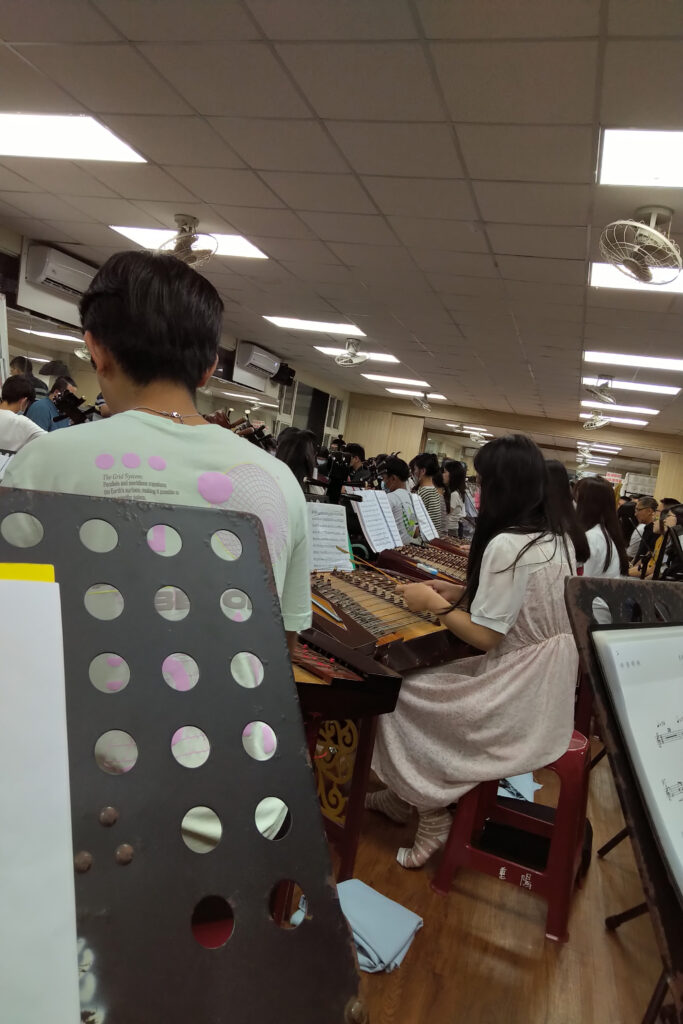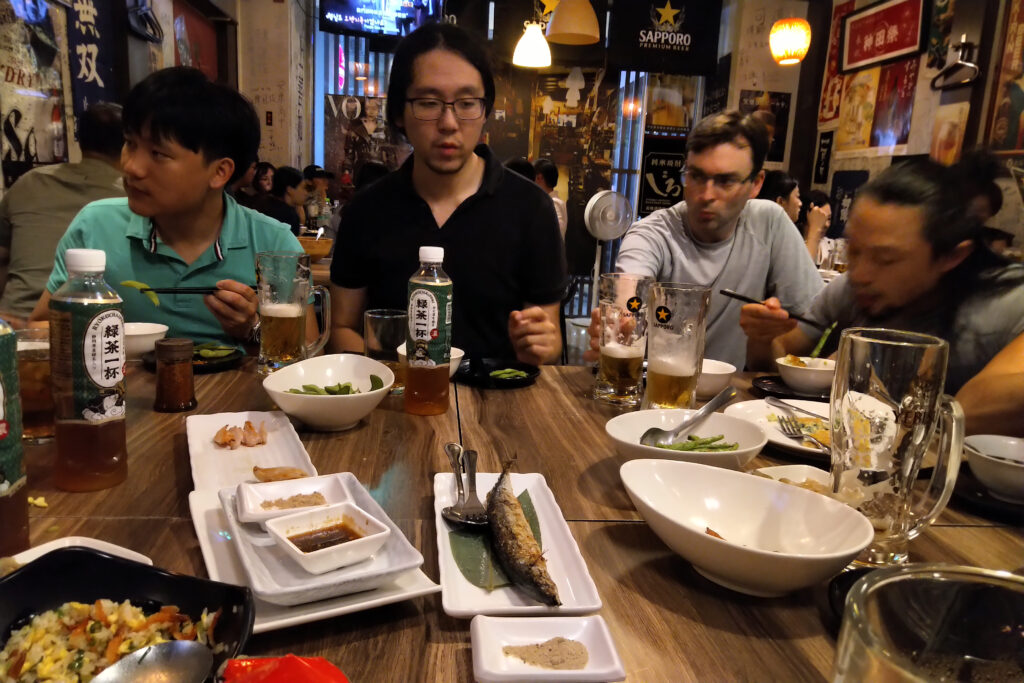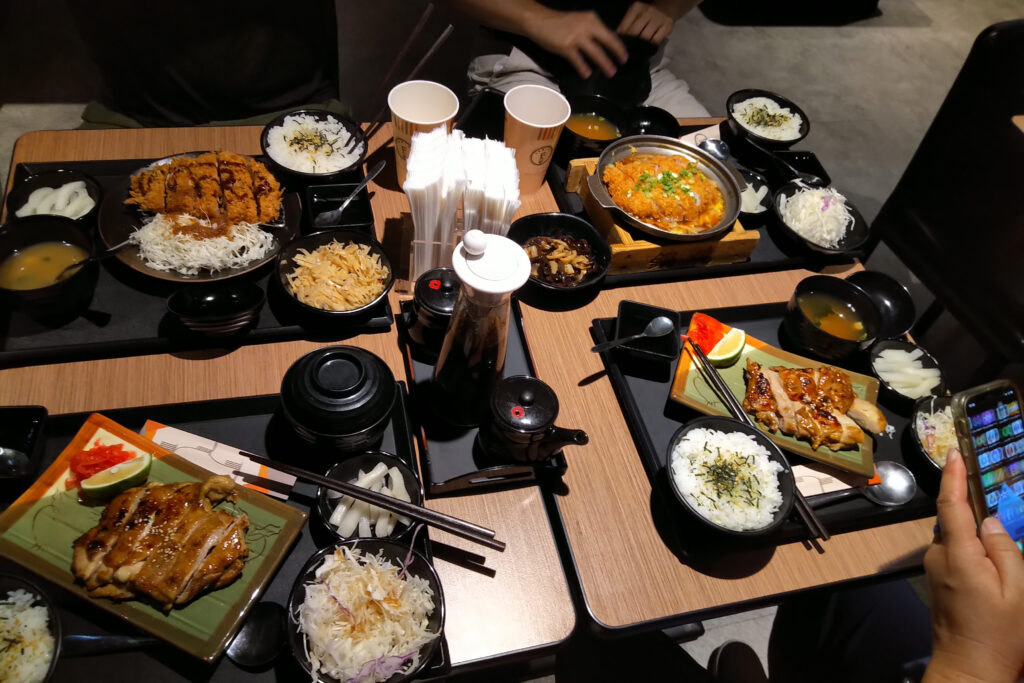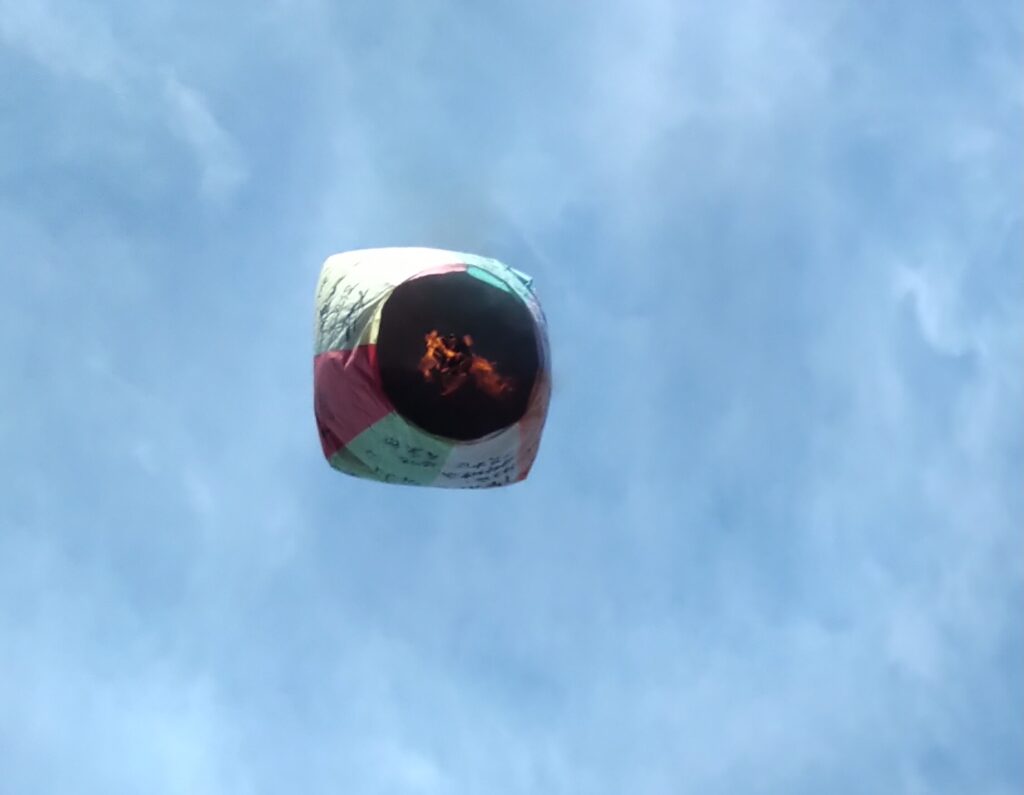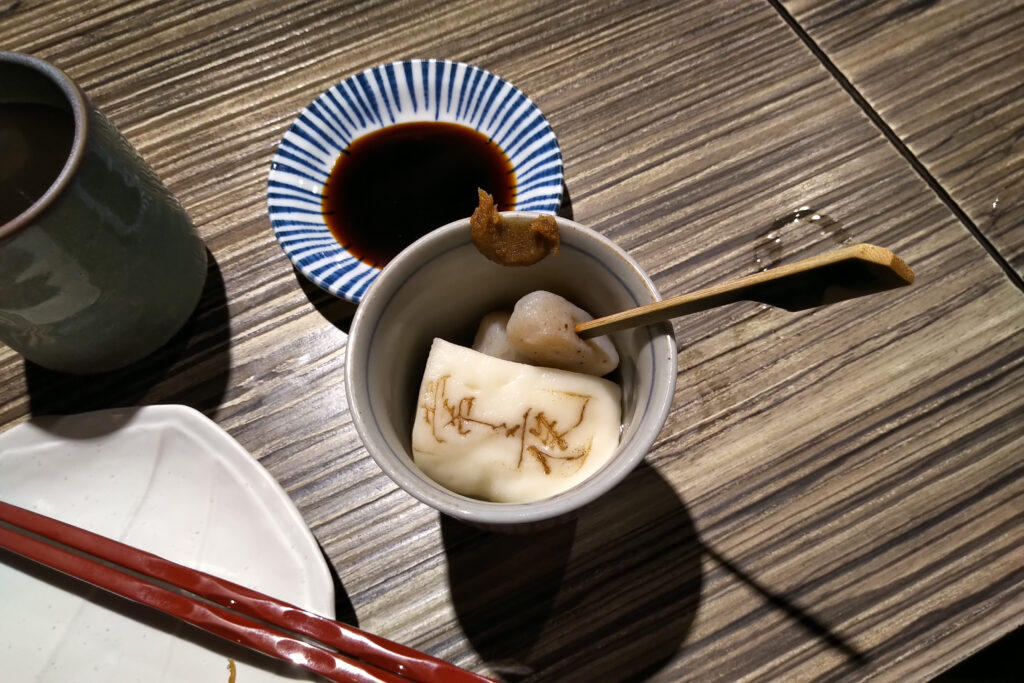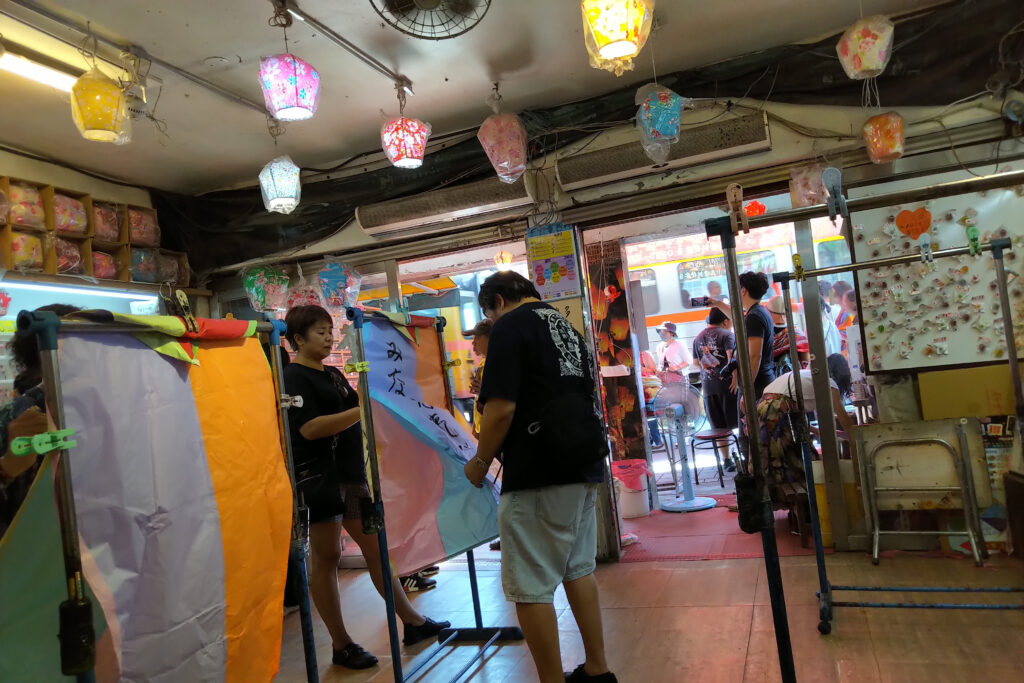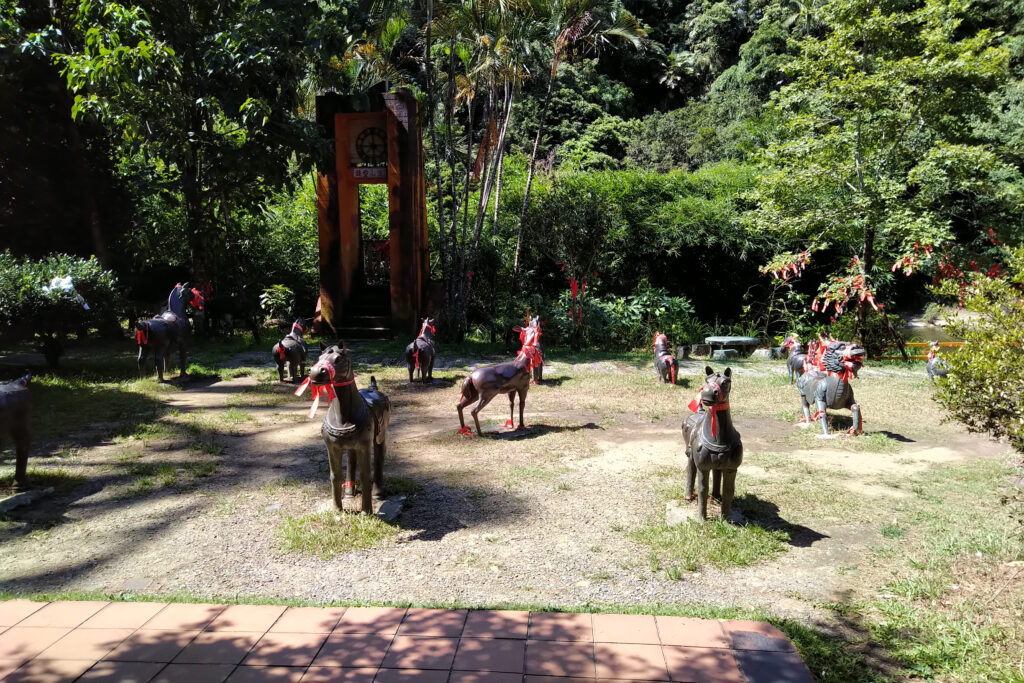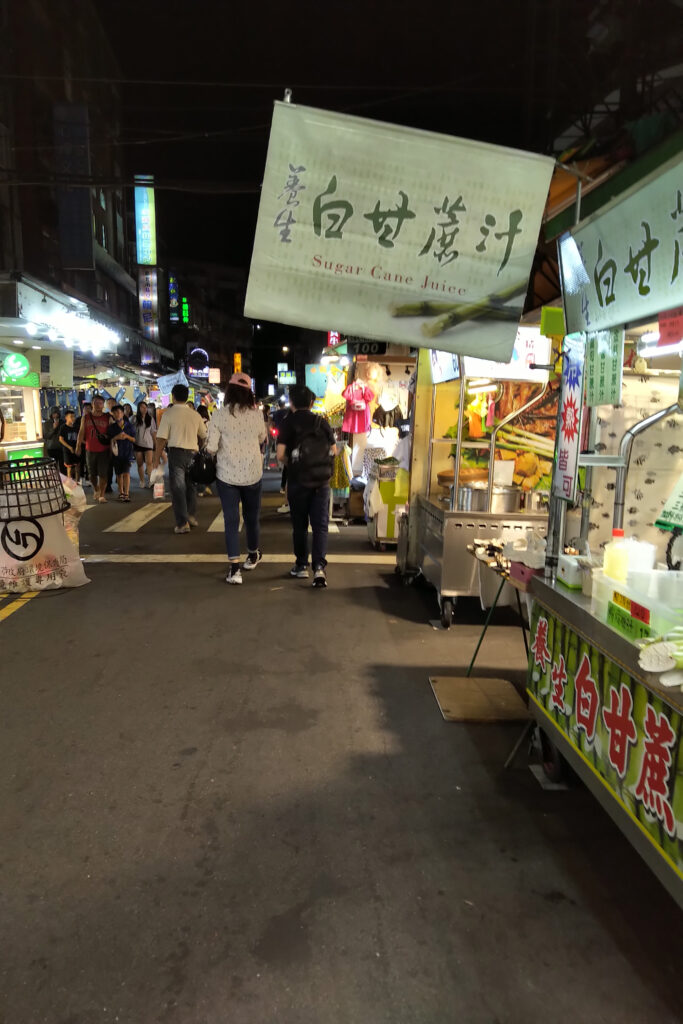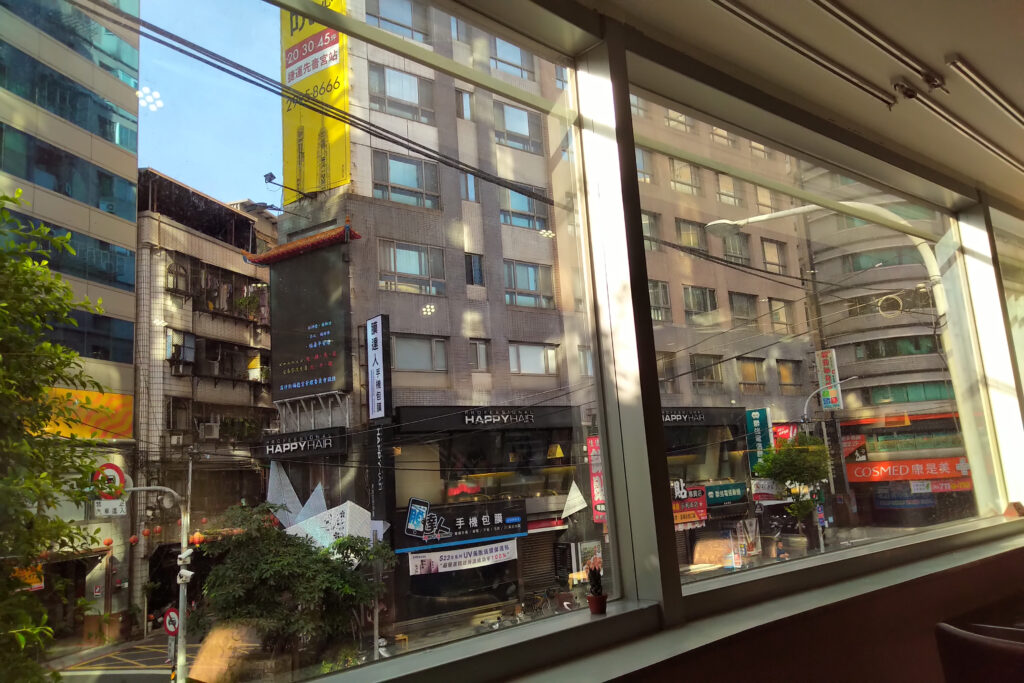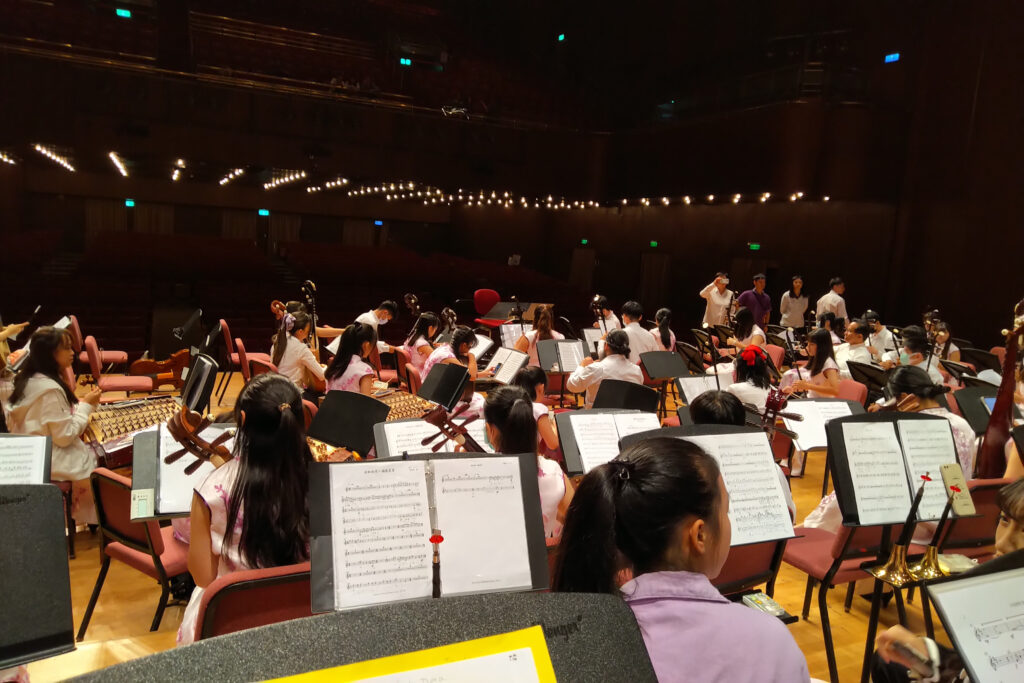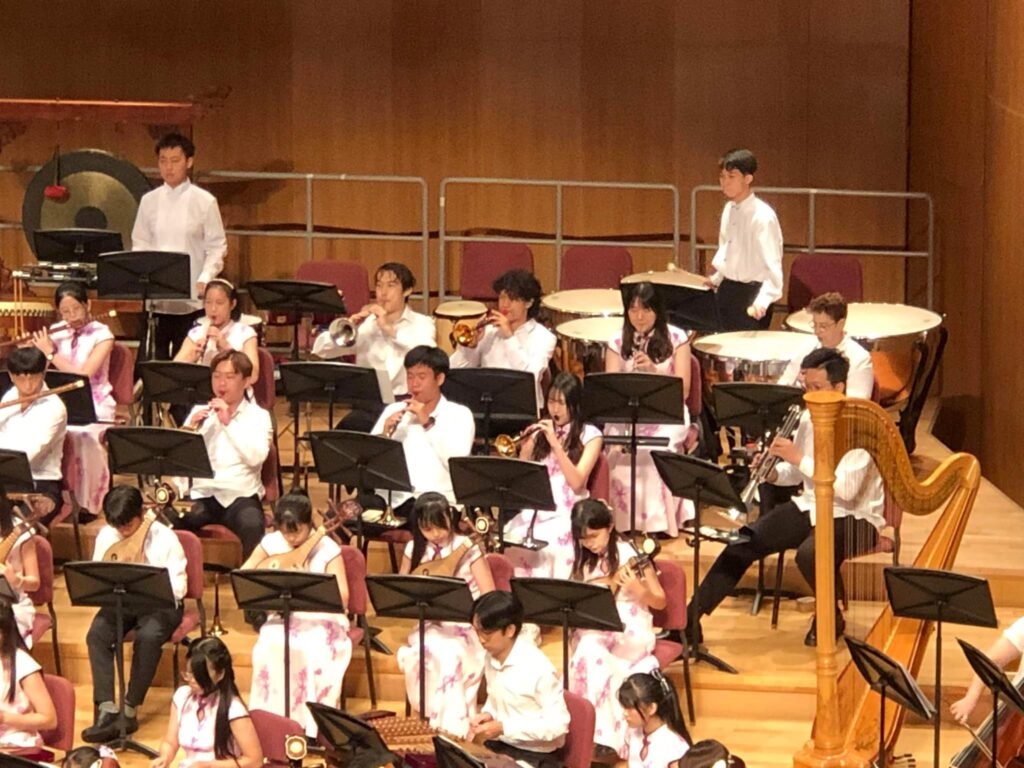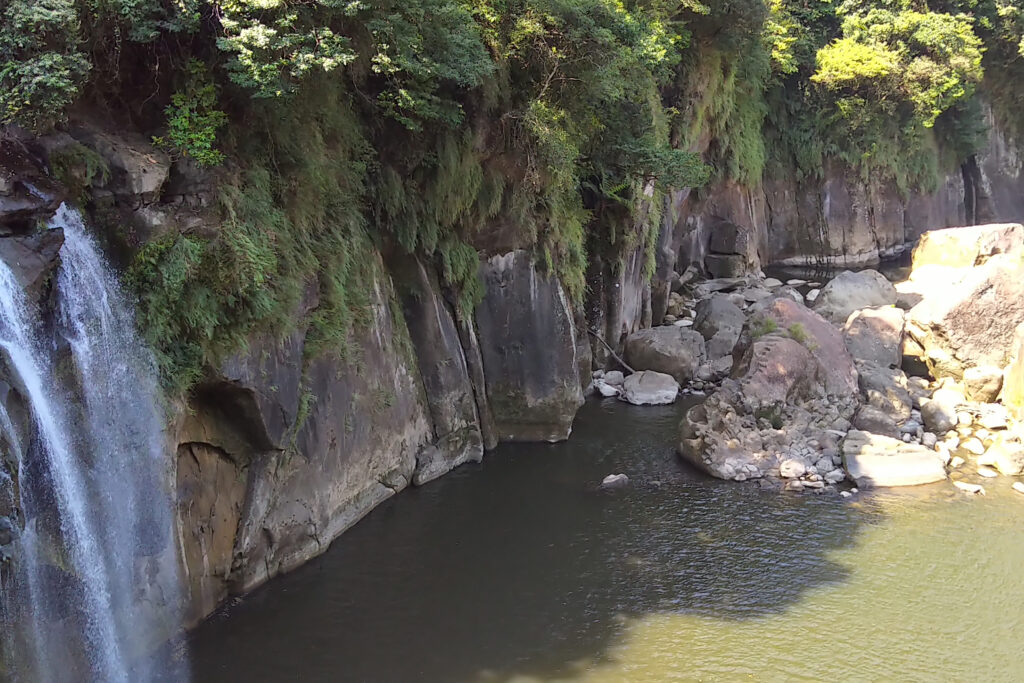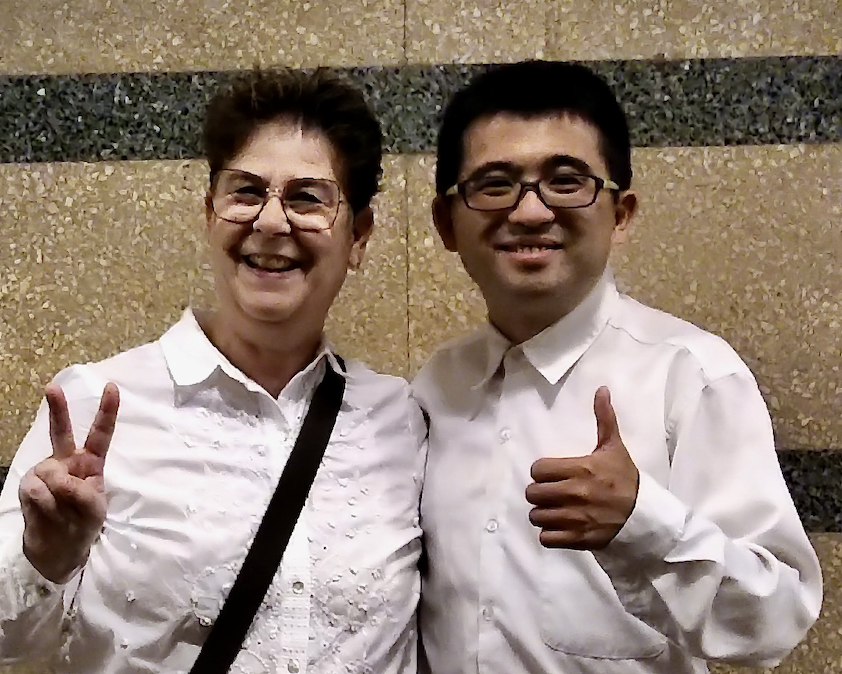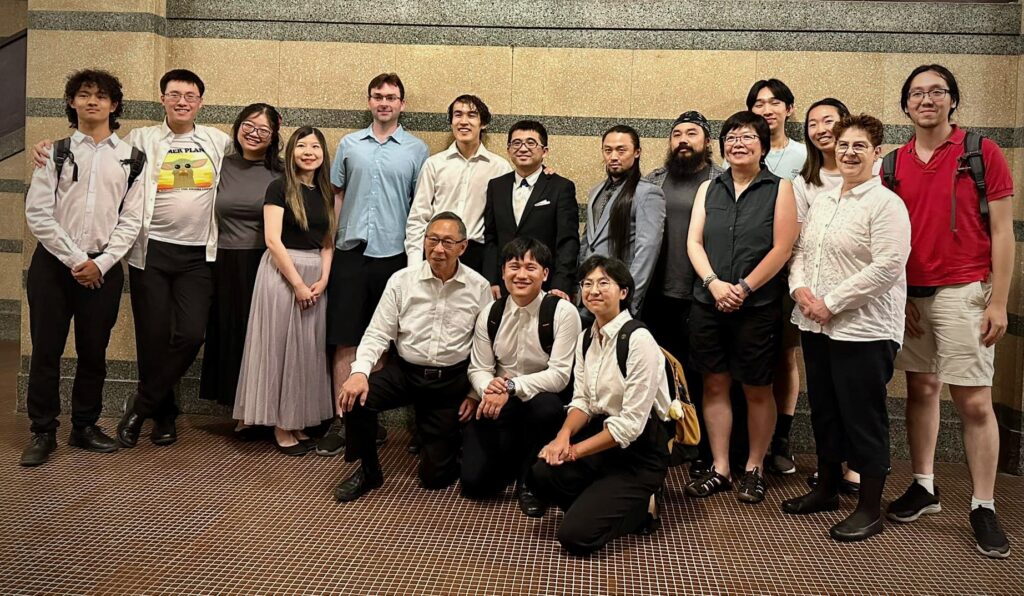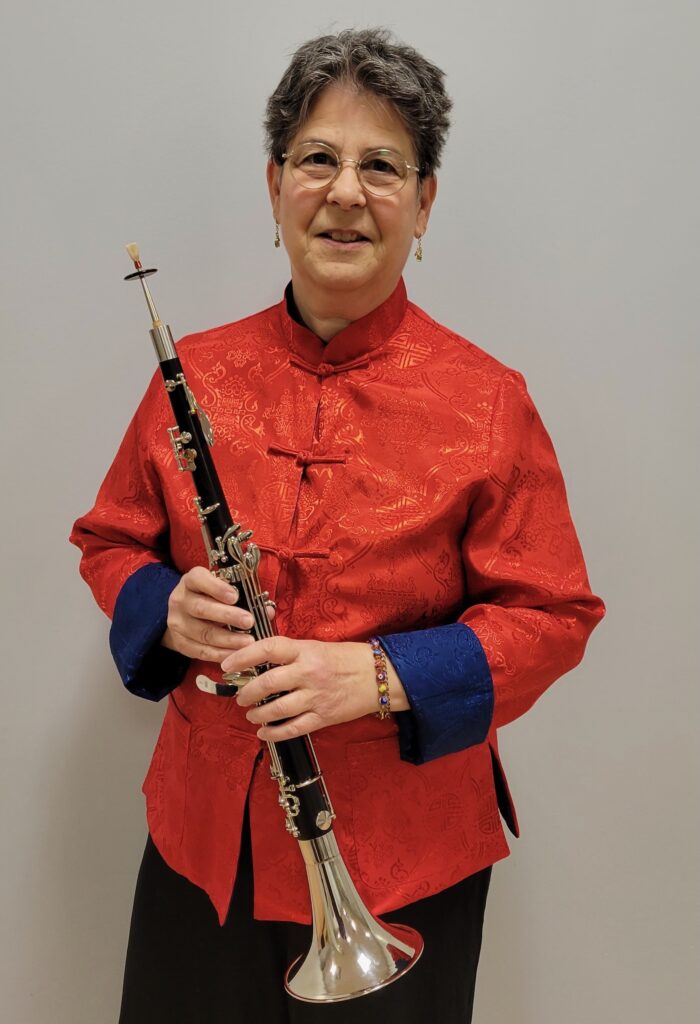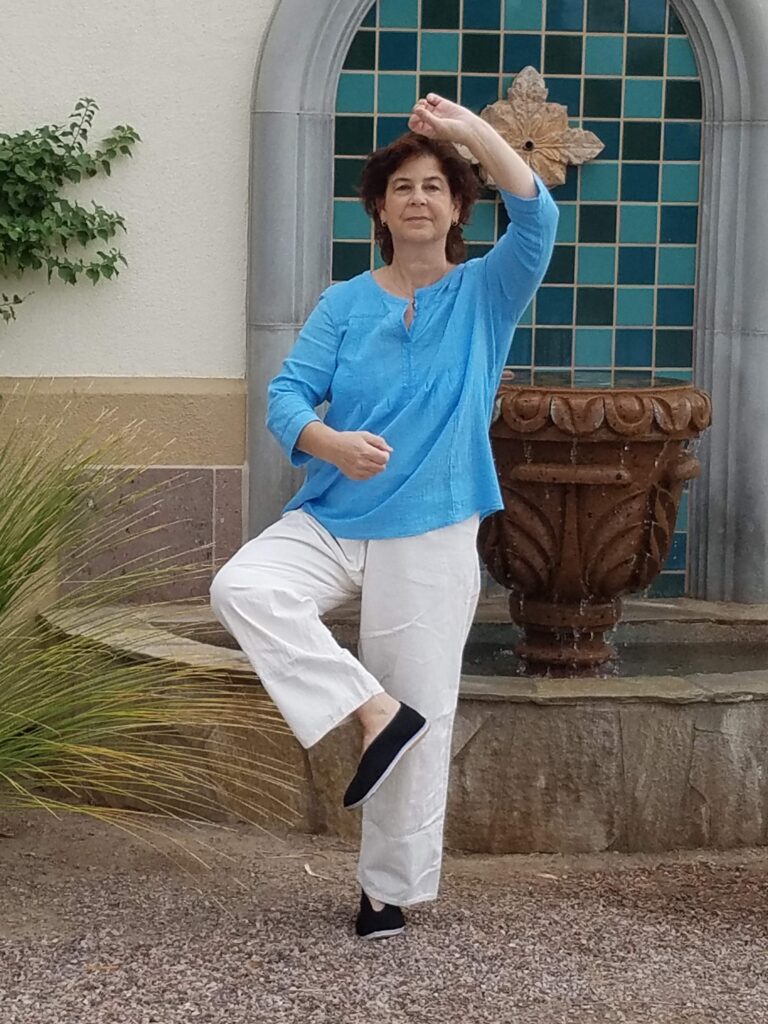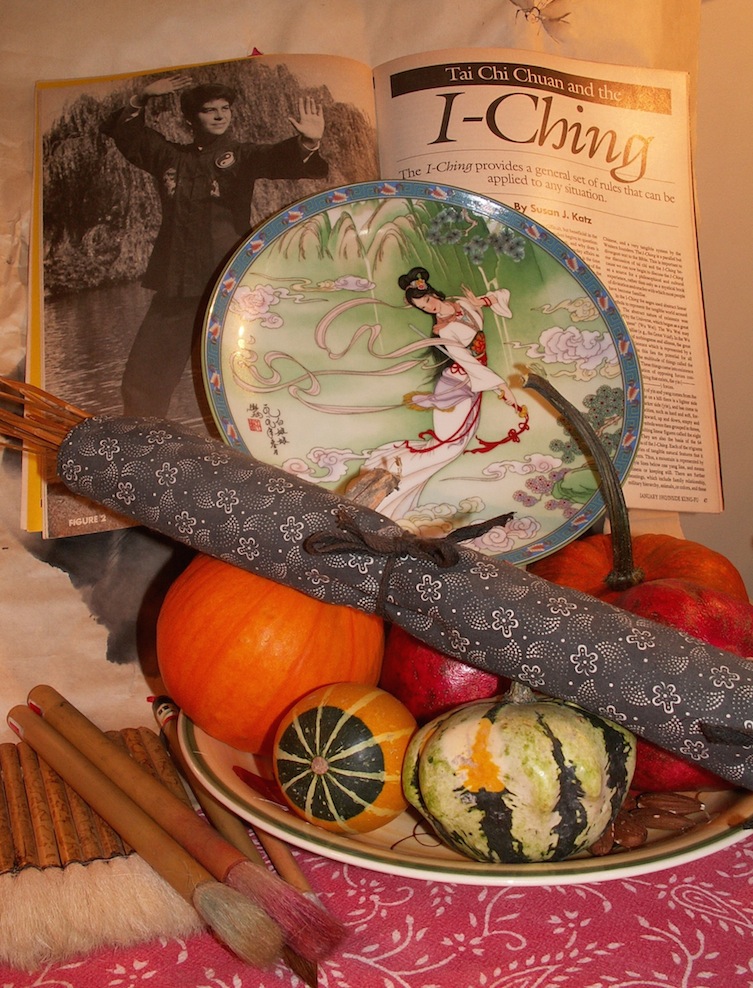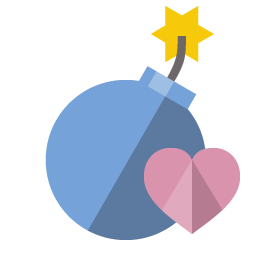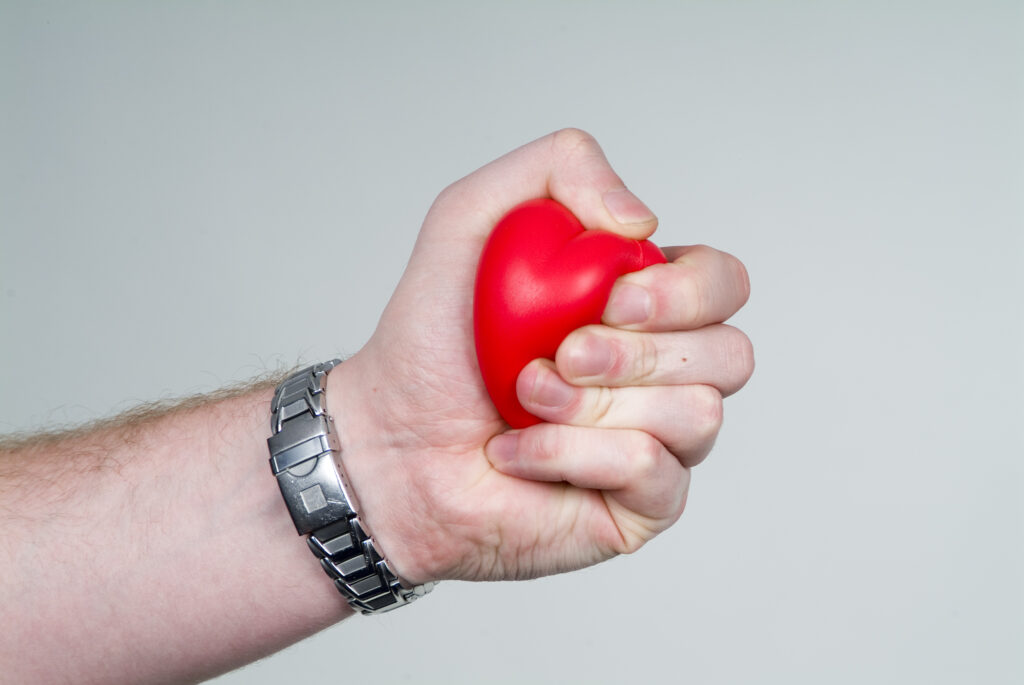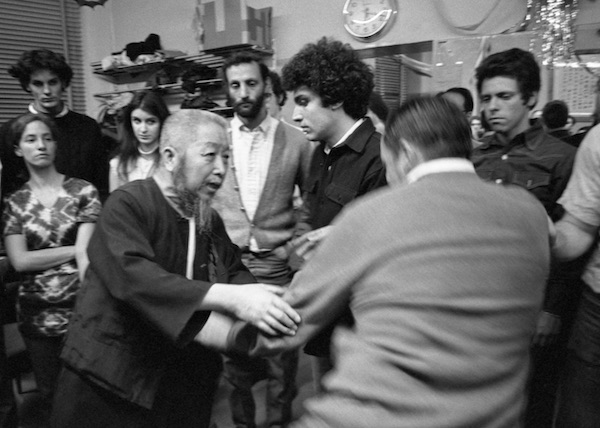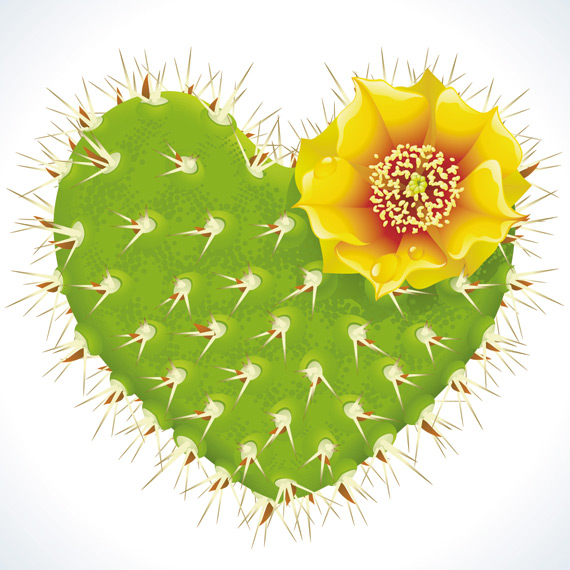-
Cultural Integrity, Valuing Heritage
“Make new friends/but keep the old; one is silver/and the other’s gold”
We used to sing that tune many years ago, usually during the closing campfire the night before a long bus ride home to suburbia from Girl Scout camp. After two weeks of camping and learning together in the great outdoors, sleeping under the stars in outdoor bunks, tending the horse corrals, swimming at the poolhouse, and singing lots of songs. The mundane chores of divvying up food servers, dish washers, and flag duty guards were done by song; routines that became old friends. These rituals helped us retain a sense of order and familiarity, of how to share chores, the fun of learning with others, and the special songs we sang about how to do this, lingered even after we returned home.
Music does that. Some music is new, some is old. Our songs came from around the world: Maori, French, Native American, British, American folksongs, to name a few. The music embeds a sense of time and place and important relationships into memory.
Sometimes, though, older music or traditions are replaced; or worse, discarded. Time and distance can cause alienation from cultural treasures, especially if the chain of connection is broken. from the origin. We learned the value of keeping our older friends or traditions, while adding new ones, from the song, “Make New Friends, But Keep the Old”.
I want to share that belief with you today through a recent experience of mine, travelling to Taiwan with a group of Canadian musicians, to rehearse and learn with a local orchestra in Taipei. It was quite a long distance to travel! But the truth is, it is quite one thing to play music from a score thousands of miles from where the music originated, and quite another to be locally and culturally immersed and learn the context and full authentic sound of the music. This is what we did.
We arrived at 5am local time, after 20 hours of travel, and after a brief stop in our hotel rooms, met for breakfast with our host, Dr. Chen Zhisheng. Then headed for the National Palace Museum.
It seemed crazy to me, with part of my mind or neshama still in Canada, to be rushing off to a museum within hours of landing. I like museums, but couldn’t we have a nap first or something? But, there was reason for Dr. Chen’s suggestion we go there: tradition and culture. That is what we came to Taiwan to absorb, to bring into our music. And, so into the museum we went.
We mostly looked at the excellent collection of foundational manuscripts there. My favourites were pages from treatises on the Yi Qing (I Ching).
Some TCO members took part in master classes in conducting for Chinese orchestra. I had Suona lessons, particularly reed-making lessons, as it is not possible to buy ready made alto suona reeds. My teacher, “Daniel” 林瑞斌 Lin Ruibin, came to my hotel each morning and so generously and graciously made reeds and gave me tools as well as lessons on my instrument and information on where to buy supplies.
We started having orchestra rehearsals after a few days. Because of the great size of the orchestra, we had to move the rehearsal venue to the dance/gym building at a school in Taipei.
Rehearsals kept up daily, and so did the post-rehearsal food! One evening, Dr. Chen took us all out to a 22 course Japanese dinner. Another night we went for Izakawa, so loud and fun and raucous, with great beer and cool A/C.
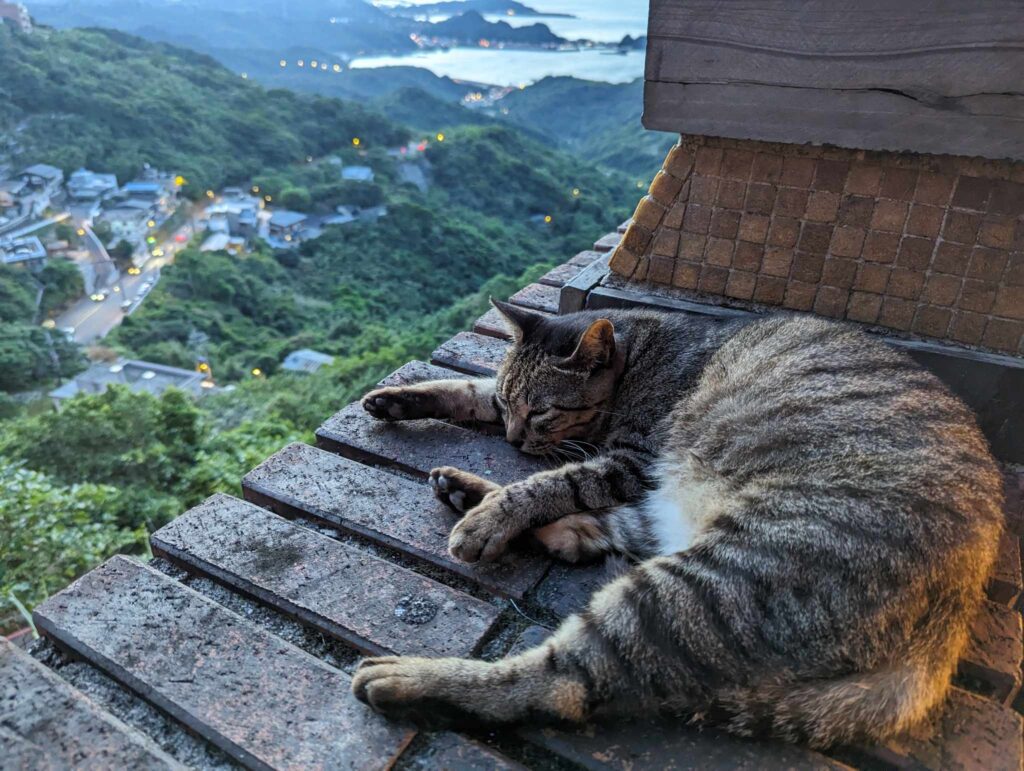
cat chilling on roof by the sea We continued our cultural explorations, going to night markets and shopping for gifts and personal treasures in the retail stores. I bought Chinese preschoolers’ calligraphy books and stationery, a dress, toiletries.
Food is a big part of Taiwan’s culture, a mix of Chinese, Japanese, Thai, and other Asian cuisines. Prices are so low and quality is so good, and everything is fresh.
In all of this hubbub, though, I truly appreciated starting my day with a quiet breakfast and looking out the window of my hotel’s breakfast room.
Eventually, the day came for our concert, Thursday 20 July. We’d had our private music lessons, orchestra rehearsals, and dipped deeply into Chinese history, language, music, food, landscapes, and customs over the past ten days.
The National Concert Hall was filled, both orchestra level and balcony. Everything went like clockwork. Most notable for me was how smooth and blended movement and sound were; my experience was that it just flowed. There was none of the usual anxiety about missing cues or entrances or playing off key as with bands and orchestras where we played well from scores, but were mostly lacking cultural literacy for the music. Instead, there was a naturalness and understanding of what we played, and we played together as a corps rather than sweating out individual parts.
All in All, it was a delightful experience, and the intent to share traditional cultural context for this music with Canadians came back home with me. Although there is motion in some parts of Asia to replace traditional Chinese music with Western orchestral music and instrumentation, and emphasize soloists, preserving the beauty and transcendence of the culture as a whole and sharing it with those in diaspora is Wisdom at work. Yes, modern western instruments were integrated into the orchestra, and yes, some pieces were very modern in vibe: however, these were enhancements of traditional sounds, tonalities, and instruments.
The Xianse Gong Chinese Orchestra and we Canadians made new friends, and we will depart to share with our golden friends back home, extending the reach of traditional Taiwanese culture and music, for the benefit of all.
-
Violence and Passive Aggression: The ‘Love Bomb’
I was making an inventory of the things I want to bring on my upcoming trip to Taiwan, where I’ll be performing with the Xianse Gong Chinese Orchestra. I’m very excited about this trip, as there will a few ‘firsts’ for me: my first travel away from Toronto since March of 2020, and also my first trip to East Asia. I’m going with a group, many of whom also play in the Toronto Chinese Orchestra. Here is a link to our concert, scheduled for 20 July: “On the Other Side of the Rainbow is Home”
High on the list, next to my Alto Suona, are the Tai Chi Chu’an slippers that I wear for morning outdoor practice. I’m hoping to join a group in the mornings at a nearby park while I’m there.
I looked at my collection of Tai Chi swords and sabres, wistfully. Much as I’d like to get extra practice with them in Taiwan, they are just too long and awkward to bring on a 13 day trip.
Then, another thought came to me, a memory of a conversation with someone who came to visit me while I was recovering from surgery a few months ago.
She was perusing my collection of books and artwork, then stopped. “Oh, you have weapons“.
“Where?” I asked. I followed her line of gaze upwards and towards a rack on top of the large keepsake display case in my dining room. “Those swords on that rack are for Tai Chi, they’re not for fighting or hurting people.”
Her nose scrunched upward, pursing in her lips as they did so, as if something smelled off. “I think of tai chi as something graceful and peaceful, not violent or aggressive, with weapons.”
“You’re right, it is graceful and peaceful. And also, Tai Chi Chu’an is a martial art – that is its origin, and if the martial applications and intentions of the movements are not understood or incorporated, than what is being done is merely arm and hand waving, with little benefit to health or inner strength.”
“That sounds violent.”
“Well, the whole point of learning Tai Chi Chu’an is to prevent violence. Tai Chi Chu’an is an internal martial art, designed to develop the inner self. By doing this, by reducing fear, violence can be prevented and if not, then the discipline and practice prepare one for self-defence. Inner peace, rather than external hard strength, is developed through learning how to engage with challenges, both inner and outer, with confidence and grace. It’s very psychological.” I thought this latter piece about psychology might register as a more acceptable reason for practising tai chi. But, her nose remained wrinkled as she continued to squint with distaste at the resting swords and sabre.
“I believe in Love Bombs as the best tool for violence prevention and self-defence”, my visitor said.
I’m not sure what a ‘Love Bomb’ is, and I asked her. The answer came as something about showing care of people and letting them know they are cared about.
Here is what I read about ‘Love Bombing’ online:
“You may have heard the term “love bombing” circulating online and on social media, but what does it mean? Although it might sound like something we’d all want — being showered with unlimited love and affection — it’s anything but healthy. Love bombing is a tactic often used by a narcissist to manipulate you into falling for them.”
This is what I came to understand while looking at my swords: Despite my being a functional invalid, with a plaster cast on my foot for the next several weeks, I never heard back from her or received the promised ‘Love Bomb’ of congregants or other helpers that were to come assist me while I recovered.
So, this irony raises some questions. What is the difference between violence, aggression, and passive aggression? and, how does Tai Chi Chu’an fit in to categories? Let’s start with the dictionary definitions of these terms, and proceed from there1:
- Violence: “the use of physical force so as to injure, abuse, damage, or destroy.”
- Aggression: “a forceful action or procedure (such as an unprovoked attack) especially when intended to dominate or master.”
- Passive-Aggression: “passive-aggressive behaviour, the donning of a mask of amiability that conceals raw antagonism toward one’s competitors, even one’s friends.— Hilary De Vries”
The history of modern Tai Chi Chu’an, of at least the past 100 years can be found online in a variety of places. Since my mind is on Taiwan right now, I found this quote in a lovely article in Taiwan Today about one of the founders of modern internal martial arts, Master Cheng Man-Ching:
“It is inconceivable to the uninitiated how a Tai Chi Chuan boxer trained only in physical and mental relaxation can fight a man of muscle. Relaxation is, in fact, the secret, and the degree of accomplishment is measured by one’s ability to relax. The most advanced achieve a mental calm that is a great force in itself.
Prof. Cheng often says that Tai Chi Chuan is a mental process that eliminates fear, which is man’s biggest enemy. Fear makes a man rigid, deprives him of flexibility and paralyzes both body and mind. When a student practices Tai Chi movements, he is taught to deal with an imaginary enemy who is strong and fierce. But when he is actually facing an opponent, he must imagine there is no one in front of him.
The appearance of Prof. Cheng as Tai Chi Chuan master is deceptive. He wears sideburns and whiskers. Chinese long gown and cloth-soled shoes are his everyday attire. On occasions, he puts on the gown-like dress he designed himself. He is more than unobtrusive; he looks sluggish….
During World War II, he staged two impressive demonstrations at the British Embassy and the American military mission in Chungking. In both cases, sturdy stalwarts experienced in Western boxing were selected to disprove his strength. None of their blows even landed. Instead of hitting him, they were sent lurching many feet away.
One towering giant of some 230 pounds tried twice. He was obviously perplexed by the inexplicable power of the small Chinese. Frustrated in the first attempt, he attacked even more violently. But force again undid him. He was tottering perilously toward a serious fall and the spectators were watching with apprehension. Before anyone knew what was happening Prof. Cheng had darted to his side to steady him with a soft hand on the elbow.”So, perhaps this story helps you have a more complete idea of what Tai Chi Chu’an is, and whether it is an aggressive, violent practice, as was my visitor’s belief, or a practice of letting go of fear and reducing aggressive behaviour.
In addition, I want to highlight the importance of understanding what ‘passive-aggression’ is. Sometimes people appear passive and harmless while they are actually harming you. The fear this behaviour arouses in you is blocking you from seeing the truth of what they are doing.
In these times we have so many restrictions on what one is or is not allowed to say. However, these restrictions do not change attitudes, and aggression and violence have not gone away. Instead, they are expressed in a sideways, socially acceptable, manner; such as a person making general statements about “certain people” or “those people” when they really are referring to you. We recognize this sort of covert violence and aggression in others as, “A Wolf in Sheep’s Clothing” or “A back-handed compliment”.
And we are harmed, because no one wants to be the little child who cries out, “The Emperor isn’t wearing any clothes”.
A “Love Bomb” is still a bomb.
Think about the people in your life, whether employers, family members, friends, neighbours, politicians, or anyone else. Are their behaviours congruent with their words? Are they helping you up or pulling you down with their polite conversation or when answering your request for assistance?
Violence and Aggression are overt and easy to discern. Passive-Aggression is much more difficult and covert. It seems too innocent, and socially unacceptable to call it out as harmful. The question arises then, of how to address the harm that aggression and violence does, whether overt or covert.
One answer is to become aware. As it is with Cheng Man-Ching: removing fear as your baseline allows you to fully feel and understand whatever is coming at you so you can address it in a non-violent and satisfying way. And, he reminds us, it takes work to be able to do this.
As I pack for Taiwan, and look ahead at practising Tai Chi Chu’an while there, a peaceful comfort comes with knowing that I am continuing to do my inner work, the work that helps me reduce fear and engage in my experiences with dignity and grace and confidence.
